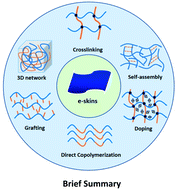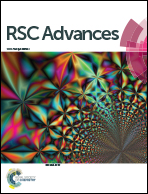Towards conductive hydrogels in e-skins: a review on rational design and recent developments
Abstract
Over the past decades, electronic skins (e-skins) have attracted significant attention owing to their feasibility of applications in health monitoring, motion detection, and entertainment. As a class of soft materials, conductive hydrogels feature biocompatibility, stretchability, adhesiveness, and self-healing properties, making them one of the most important candidates for high-performance e-skins. However, profound challenges remain for achieving the combination of superior mechanical strength and conductivity of conductive hydrogels simultaneously without sacrificing their multifunctionalities. Herein, a framework for rational designs to fabricate conductive hydrogels are proposed, including the fundamental strategies of copolymerization, doping, and self-assembly. In addition, we provide a comprehensive analysis of their merits and demerits when the conductive hydrogels are fabricated in different ways. Furthermore, the recent progress and future perspective for conductive hydrogels in terms of electronic skins are highlighted.

- This article is part of the themed collection: 2021 Reviews in RSC Advances


 Please wait while we load your content...
Please wait while we load your content...